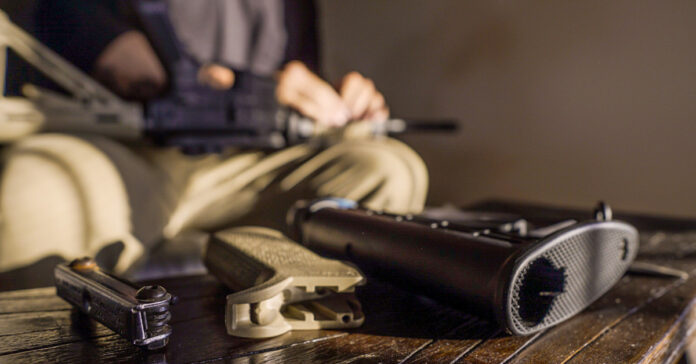At least once a year, I like to go through my firearms, inspect them, test the springs, check that any batteries still work, and clean and lubricate them. I often do this during football season because during a three-hour football game, there is plenty of time to clean a rifle or two.
This is especially important for guns that are not in a temperature and humidity controlled environment. For example, if you keep a gun in your car, you may want to inspect and lube it twice a year: Once in the spring and again in the fall to make sure nothing has rusted. If you hide a gun somewhere unusual, like in the breakfast cereal box where Copperhead kept her gun in Kill Bill Vol. 1, it pays to check on it from time to time, not only to make sure it is still there, but to make sure it still functions.
Guns that are carried regularly should be check monthly. At the very least, this should include blowing pocket lint, dust, and other debris out of the gun and holster. I am sometime shocked by the crap that accumulates in a pocket holster.
How to Inspect Your Stored Weapon
To inspect your weapon, make sure it is unloaded. Remove the magazine, visually and physically inspect the chamber and any feeding devices like a tube, and cycle the action a few times manually.
Visually check for rust, including in the barrel, and ensure metal guns have a protective coating of oil. Sometimes small aftermarket parts can rust at a different rate than the gun itself, so check things like the slide release. On long guns, don’t forget to look at the sling and any sling hardware. I have found mold on leather slings.
Following all safety precautions, I will dry fire all my guns except rim fires. To test the firing pin on a centerfire pistol, I take a pencil and drop it in the barrel of an unloaded gun, eraser side down. Then I point the gun upwards and pull the trigger. The pencil should shoot out. If not, your gun needs a thorough going over to diagnose and fix the problem or a trip to the gunsmith. I often perform this test after cleaning and reassembling each gun. It has the added benefit of leaving the gun with the hammer down and the springs relaxed.
Follow the manufacturer’s instructions on how to clean and lube your gun. There are plenty of instructional videos, lots of cleaning systems, and many fine products. For me, the key is that a patch pulled through the barrel should be clean and show the barrel is lightly oiled to prevent rust.
Batteries are Frequent Points of Failure
In my experience inspecting my guns, batteries are a key point of failure, especially in optics. I don’t know if those coin cells like the 2032 are just not very long lasting or if the red dots drain power even when they are off, but in my occasional checks, these are the most frequent failure point, even in optics that say they are good for 5,000 or even 50,000 hours of use. As a result, I generally buy the 2032s in packs of 20 or 25 and try to keep a dozen or more on hand at all times.
Without a battery, most traditional red dot sights are useless. Yes, I’ve seen red dots with solar cells on top, but they don’t work in low light situations and may be useless indoors. An alternative is an optic that uses tritium, such as most of the ACOGs. These will show you a lit aiming point under any aiming conditions. There are also magnified optics that use a black reticle that is lit using a battery. Because the reticle is present even when not lit, it can be used with a dead or missing battery.
For weapons with on-board batter caddies or storage locations, like the pistol grip or shoulder stock of an AR, I use the batter stored in there and replace it with a new one to ensure the batteries are being rotated.
CR123 flashlight batteries are long lasting and I rarely have to replace them in lights that just sit in the safe. They reportedly have a shelf life of up to 10 years, so changing your batteries every five years should ensure you have plenty of power when you need it. I try to avoid AA and AAA batteries for optics.
LED Improvements
It’s worth noting that LED technology has improved at a rapid rate, resulting in brighter and brighter LEDs available each year in a light small enough to mount on your rifle. Right now, my brightest rifle-mounted flashlight Is 1,300 lumens, but I have seen a 2,500 lumen model on sale. I occasionally will upgrade to a brighter light and put the lights with less brightness, like and older 700 lumen light, on shotguns that will not be used to engage distant targets.
In our neck of the woods where there is little or no light other than that which is cast by mother nature, even an older light can make quite a difference. When it is pitch black, any light is better than no light.
Like an optic, you should use your weapon-mounted light to identify your target and avoid shooting something you cannot clearly identify. It should not be used for navigating or other common lighting tasks. For this reason, I store a head lamp and a traditional tactical flashlight in my gun safe. If I need to deploy with a weapon light, chances are I will need a secondary light as well.
A Good Winter Activity
If you find yourself trapped inside due to cold or icy weather, consider giving your armory a once over. It’s a great way to protect your investment.







